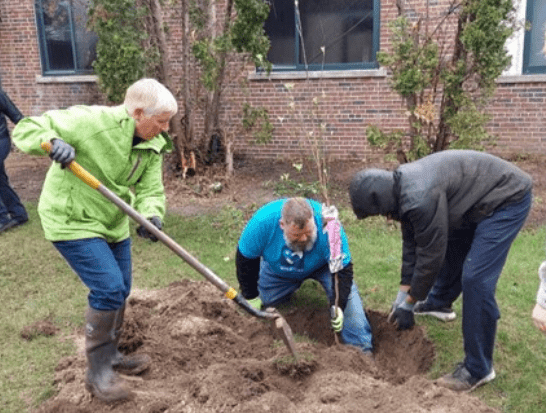We have much more to do and your continued support is needed now more than ever.
NASA and Eco-Schools USA – Get Your Techno On!
This post was written by Laura Hickey, Senior Director of Eco-Schools USA, from the NASA Goddard Visitor Center in Greenbelt, Maryland.
Continuing coverage from our inaugural NASA/Eco-Schools USA Climate Change Connections institute, let’s take a look at this week’s examination of the new climate change curriculum developed by Dr. Amanda Staudt and Jennifer Hammonds.
This part of the institute introduced participants to technology and tools that NASA offers through its MY NASA DATA program. Educators have to “Get Their Techno On” to be able to learn how to access the scientific data and interpret the data. Likewise, our curriculum motto is “LEARN – DISCOVER – TEACH”.

NASA education specialist Brian Campbell gave an amazing overview of the NASA Goddard Center and presented the much-anticipated Science On a Sphere (SOS) educational tool. SOS is a room-sized, global display system that uses computers and video projectors to display planetary data onto a six foot diameter sphere, analogous to a giant animated globe.
Researchers at the National Oceanic and Atmospheric Administration developed SOS to help illustrate Earth system science to people of all ages. Animated images of atmospheric storms, climate change and ocean temperature can be shown on the sphere. This massive educational tool is used to explain complex environmental processes in a way that is simultaneously captivating and intuitive.
The hour-long SOS presentation was amazing—we saw hurricanes forming in the devastating 2005 season, the change of ice coverage in various regions of the world, phytoplankton ebb and flow, as well as ten other datasets which depict various environmental processes.
The crowd was at times silent, absorbing the experiential lesson, and at times questions and exclamations were flowing freely. What everyone wanted to know: how can the audience bring this amazing resource home to their students? The answer is that although installations are on the rise, it’s still rather limited to planetariums.
The good news is that these same data sets can be viewed on the 2D platform Google Earth. While not quite the awe-inspiring, in-your-face experience, Google’s 2D visualization version is still very effective—and more accessible—in educating people about various environmental changes.
On that note, one of the biggest challenges for some of these teachers is the lack of technological infrastructure at their school. About half of the teachers say that there are not enough computers at their schools, and they wonder how to utilize these much desired resources.
In our remaining time together at Climate Change Connections institute, we will explore the teachers’ desire to “Get Their Techno On” if they and their underserved students don’t have basic computers. We are working together through Wednesday of this week—stay tuned for more updates from me about this exciting NASA/Eco-Schools USA Professional Development Institute.
Learn more about the program at www.eco-schoolsusa.org and ‘Like’ us at Facebook.com/ecoschoolusa.




















